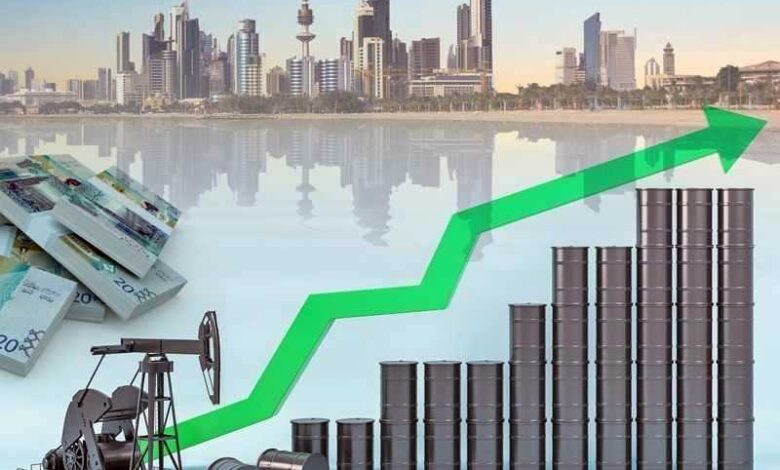
Contrary to expectations held by the conservative government, who predicted average prices to stabilize around $70 per barrel for the fiscal year 2024-2025, the price of Kuwaiti oil surged to $88.2 per barrel.
In contrast to what the conservative government had anticipated, with expectations that average prices for the fiscal year 2024-2025 would stabilize around $70 per barrel, the price of Kuwaiti oil surged to $88.2 per barrel. This price is approaching the break-even point set in the new budget by the Ministry of Finance at $90.7 per barrel, a crucial threshold for ensuring that oil revenues cover budget expenses without resulting in a deficit.
The ongoing upward trend in oil prices, evident since the year’s start, presents an opportunity for the budget to mitigate the projected deficit, initially estimated at 5.8 billion dinars in the budget draft. This potential improvement is bolstered by the government’s efforts to streamline spending, expedite profitable development projects, and diversify income sources.
With the onset of April heralding the commencement of the fiscal year 2024/2025, attention shifts to critical elements such as:
- Projected revenues of 18.7 billion dinars
- Anticipated expenses totaling 24.5 billion dinars
- An estimated deficit of 5.8 billion dinars
- Expected oil prices at $70 per barrel
- The budget’s break-even price set at $90.7
Oil gains
Since the start of this year, oil prices have surged by 14% due to production cuts enforced by the Organization of the Petroleum Exporting Countries (OPEC) and its partners, countering increased supplies from non-member nations. According to BloombergNEF, the OPEC+ coalition is poised to affirm its current production strategy in today’s meeting (Wednesday), projecting a deficit until year-end.
The emphasis on supply dynamics has allowed oil prices to shrug off the impact of robust US manufacturing data, which influenced bond traders to anticipate a smaller interest rate reduction by the US Federal Reserve this year. Consequently, the dollar index reached its highest level in two months. Typically, rising interest rates and a stronger dollar signify a bearish trajectory for commodities.
Five indicators support rising prices
In addition, a report issued by the Organization of Arab Petroleum Exporting Countries (OAPEC) attributed the rise in crude oil prices to the following reasons:
- Expectations that the US Federal Reserve will not lower interest rates in the near term, potentially impacting oil demand.
- Expectations that the OPEC+ group will maintain current production policies, continuing voluntary production cuts of 2.2 million barrels until June 2024 to support global oil market stability and balance.
- The escalation of targeting Russia’s energy infrastructure has led to the shutdown of approximately 14% of its total refining capacity and raised concerns about supply disruptions.
- The activity of oil refineries in the United States of America continues to recover, reaching an operating rate of 88.7%, the highest level recorded since last January.
- The number of American drilling rigs decreased for the second consecutive week, dropping by 3 rigs to reach 506, signaling a potential decline in future oil supplies. This decline is influenced by various factors.
On the other hand, the report mentioned several factors that could constrain the rise in crude oil prices:
- The US dollar index has risen, approaching its highest level in 6 weeks. This increase makes crude oil more expensive for holders of other currencies, potentially limiting demand.
- US commercial crude oil inventories unexpectedly rose by about 3.2 million barrels, driven by increased oil imports and decreased exports.
- US gasoline stocks also rose by approximately 1.3 million barrels, marking their first increase in about two months. This rise occurred amid a slowdown in domestic demand for the second consecutive week.
- There are hopes for a potential decline in escalating geopolitical tensions in the Middle East. Such a development could help secure oil trade passage through the Red Sea and prevent targeting incidents.













